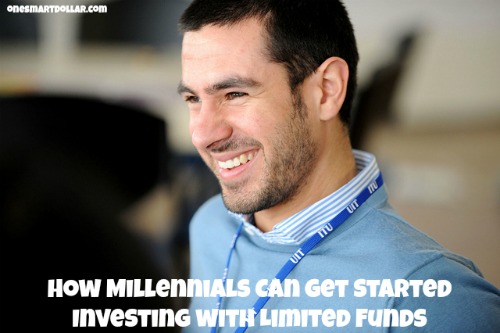
When your funds are limited, realizing that you need to cut your budget even more can hard to accept. But what if I told you shaving just $10 from your grocery budget and investing it instead could allow you to turn that $10 into $20? You’d probably want to do it, wouldn’t you?
I’m not promising you will magically end up with a 100% return on your investments by employing the practices listed below. However, I am going to show you how your money can grow, when you thought it wasn’t possible, by describing how millennials can get started investing with limited funds.
Find the Money
Take a look at what you spend your money on each month. Do you actually need to buy a pop each day from the convenience store near your job? Water is better for you and much cheaper than pop if you get it from the tap instead of buying bottled. Or perhaps you go out for lunch each day because it’s too far to go home. Try making your lunch and bringing it with you instead. You could save anywhere from $10 to $30 dollars each week simply by making lunch at home and taking it to work each day. Plus, you might be able to take leftovers and save even more money by making sure that you use up all of the food you’ve cooked. When you add the savings up from these small actions, in a month’s time you cut at least $50 from your budget. If you stop drinking pop that figure goes up even more.
If you put $50 per month in a jar, you would have $12,000 twenty years later. However, if you take that same $50 per month and invest it, you could end up with $22,000 or more thanks to compounding interest working in your favor. That’s a pretty big difference.
Choose a Strategy
Deciding on an investment strategy can be almost as hard as finding the money to invest in the first place. When you work hard for your money you don’t want to watch it trickle down the drain because of a bad investment choice. Here are some choices to consider:
- 401K’s – Some employers will match up to a certain percentage of funds that you invest into your retirement account each month. This is free money, so don’t throw it away if you are given this opportunity.
- DRIPS – Dividend Reinvestment Plans allow you to purchase dividend paying stock with small amounts of money directly from the company. As the name implies, any dividends the stock makes are not paid out but instead reinvested back into more stock. Once the balance is large enough you can move the funds to another type of investment.
- ETF’s – Exchange Traded Funds allow you to track a particular section of the performance of the investment market. In addition, some of these funds also pay dividends.
- Target Date Funds – These funds keep your money safe as you get closer to your target retirement date by changing the percentage of stocks and bonds. Pay attention to the fees charged as well as minimum investment amounts. In order to avoid losing money in your investments.
Now you know where to look within your budget to come up with a little money as well as a few ideas of how to invest it. Whichever strategy you choose, I hope you will consistently invest for a better financial future.
What other ideas do you have of how millennials can get started investing with limited funds?
Kayla Sloan is a personal finance blogger in her mid-20s who loves to write about money topics of all kinds.
